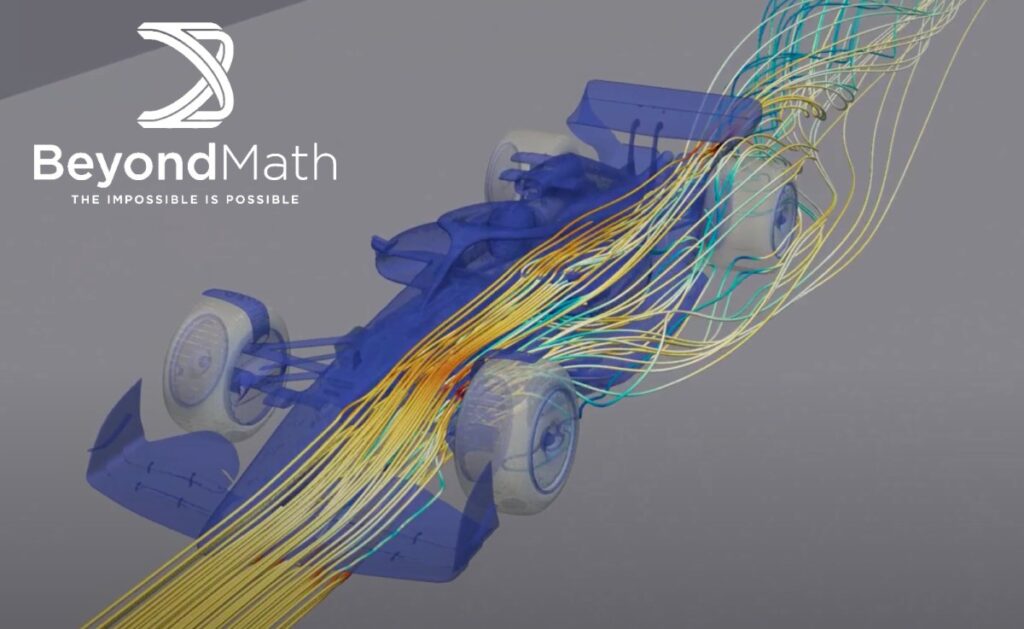Simulating the real world is an incredibly complex problem when done with a practical level of fidelity. Traditional methods have held automotive and aerospace design teams back, but Beyond Math is leveraging AI to develop a new way to simulate the world that can save days or weeks of wait time.
“Language doesn't have a mathematical model that explains what the next word is, but physics does, and it turns out machine learning is really good at not just pattern recognition, but computation as well,” co-founder Darren Garvey said.
The field where Beyond Math is taking its first steps is called computational fluid dynamics (CFD), and it's been around for as long as computers have. The equations that govern how objects move through air, water, or the air around them are incredibly complex. So while our ability to predict how air will flow over a wing, for example, is continually improving, it's still far from perfect. And the sheer amount of computational power it can perform is limited to supercomputers and GPU clusters.
As a result, there is a lot of waiting in the design process for industries like cars, planes, and boats.
“The designers think hard about what will work, run a simulation, and then they come in the next morning and get the results. They have to go through that loop a few times to see if it's what they wanted, and then they take it to the wind tunnel,” Garvey said. The wind tunnel might not match the simulation, so they go back to the drawing board.
Beyond Math's goal is to accelerate the digital design side of things, which means shortening the delay between having an idea and knowing if it works.
“They're saying, if I make a design change, will my car be more fuel efficient? Imagine you have six months to design an airplane part. You might only have 20 attempts because simulations take a very long time. But if a designer can come up with an idea and get results within seconds or minutes, they might be able to make a million changes in that same six months,” Garvey said.
 Image credit: Beyond Math
Image credit: Beyond Math
And rather than simply churning out more GPUs running the same old equations, machine learning is beginning to look like the way to go. Their first product is a “digital wind tunnel,” which simulates airflow over complex surfaces in near real time with a fidelity that would normally take hundreds of times longer.
The scientific literature has shown that machine learning models trained on thousands of hours of simulation and observed patterns can be used to effectively approximate models of weather systems in a fraction of the time, but Beyond Math doesn't have the luxury of a pre-existing training set.
“There's not a lot of simulation data out there. You can't train it off the whole internet like you can with LLM. As a startup, how do you get something that's comparable to what designers are using and that works with very complex geometries?”
Surprisingly, the answer they found was not to rely on simulations, but rather to have a theory behind things like wind tunnels, and a model that understands the observed reality of that theory.
“We're not trying to approximate a simulation, we're trying to approximate the real world,” Garvey says, “and to do that we need to bring in real-world data.”
Once a model understands how a system works, it could also actively participate in its design, a possibility that many engineers are already beginning to explore in other fields. Garvey likened this to image understanding, where machine learning models also had to walk before they could run, but once they became adept at analyzing images, generating images became the intuitive next step.
One of Beyond Math's first markets will be Formula 1 racing, with several unnamed teams looking to use the software to speed up the aerodynamics and vehicle design process.
“They are one of the heaviest users of CFD, they are fast moving and will adopt new technologies. We have worked closely with several F1 teams, done a lot of evaluations, understood their underlying problems and we are close to having a platform that will actually make their cars faster,” Garvey said.
 The Beyond Math team (Garvey, second from the right). Image courtesy of Beyond Math
The Beyond Math team (Garvey, second from the right). Image courtesy of Beyond Math
Indeed, he expressed hope (with the usual caveat that there are no guarantees) that within six months “we will be able to demonstrate that customers are benefiting from these models and that we are moving from research and proofs of concept to having real impact.”
New funding should help make that happen: Beyond Math just raised $8.5 million in a seed round led by UP.Partners, with participation from Insight Partners and InMotion Ventures.
The startup plans to double the size of its team and expand its computing power: it has purchased an Nvidia DGX 200 and is working with the chip giant to tackle this interesting new application of the ubiquitous computing hardware.
While the competitive and well-funded F1 racing community is certainly a good customer, Beyond Math is still considering its next steps.
“We've seen a lot of success in the design space for our customers, but there's a long way to go from there to something more generalizable. For example, a model might understand a car or a car-like object, but it doesn't necessarily understand an airplane or a blood vessel,” Garvey said. “But that's how a typical startup works: You have to find a path to gain traction before you can find a path to scale. As a company, we're focused on these top-tier customers and helping them bootstrap their companies.”



